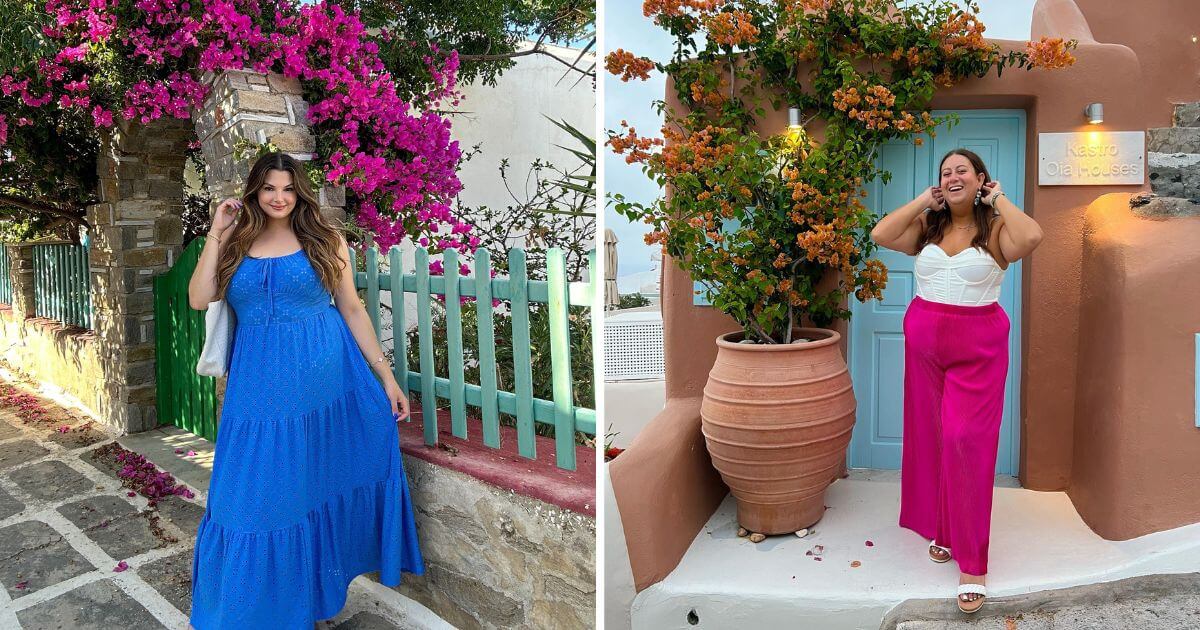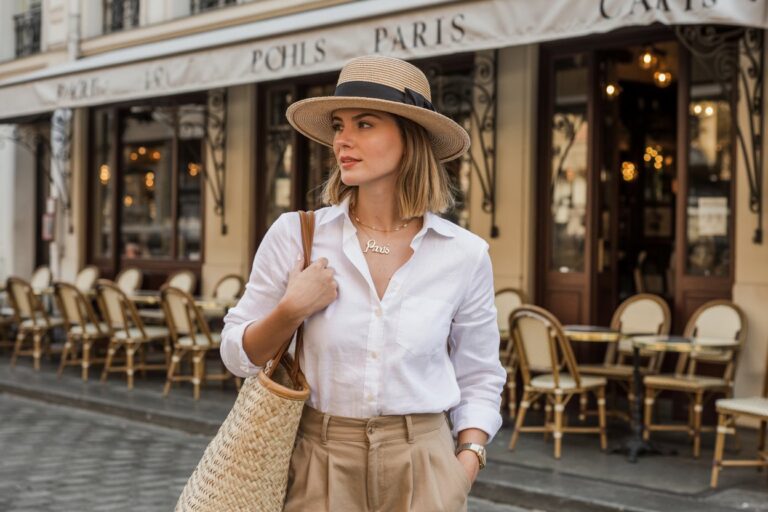Greece Travel Outfits for Plus-Size Women: Style Tips for Every Season
The first time I traveled to Greece, I packed all wrong. My suitcase was full of jeans, tight tops, and shoes that looked good in photos but hurt halfway through the streets of Athens.
By day 3, I was sweaty, sore, and feeling like I stuck out more for my discomfort than my curves.
That trip changed me. Standing under the Santorini sun, fanning myself with a museum map, I promised I’d never let bad packing steal the joy from travel again.
I started learning which fabrics breathe, which cuts flatter, and how the right outfit can completely shift your energy.
It wasn’t just about clothes anymore; it was about showing up fully as myself, without trying to shrink to fit the place.
That’s why I’m writing this. I want every plus-size woman heading to Greece to feel confident and prepared from the moment she zips her suitcase.
This isn’t a list of what’s trendy—it’s a season-by-season guide built on real travel, practical packing, and outfits that actually work when you’re walking ancient ruins or catching ferries in the Aegean wind.
We’ll cover how to dress for Greece’s weather, the best fabrics for heat and movement, and simple ways to feel photo-ready without sacrificing comfort.
By the end, you’ll know exactly what to wear, why it works, and how to make every outfit feel like an act of confidence instead of compromise.
Understanding Greece’s Climate Before You Pack

Before you even think about outfits, it helps to know what you’re dressing for.
Greece has a classic Mediterranean climate—long, hot summers and short, mild winters, with coastal and island breezes that change how heat feels from place to place.
According to the Hellenic National Meteorological Service, the warmest months are July and August, while December and January bring cooler, wetter days.
Action step: Before packing, check the monthly weather averages for your route—Athens, Santorini, or Crete all feel different. Bring breathable fabrics for heat and a light layer for ferry rides or breezy nights.
Now that you know what the weather’s like, let’s talk about what to actually wear through the seasons.
Spring Outfits: Breezy Layers You’ll Love
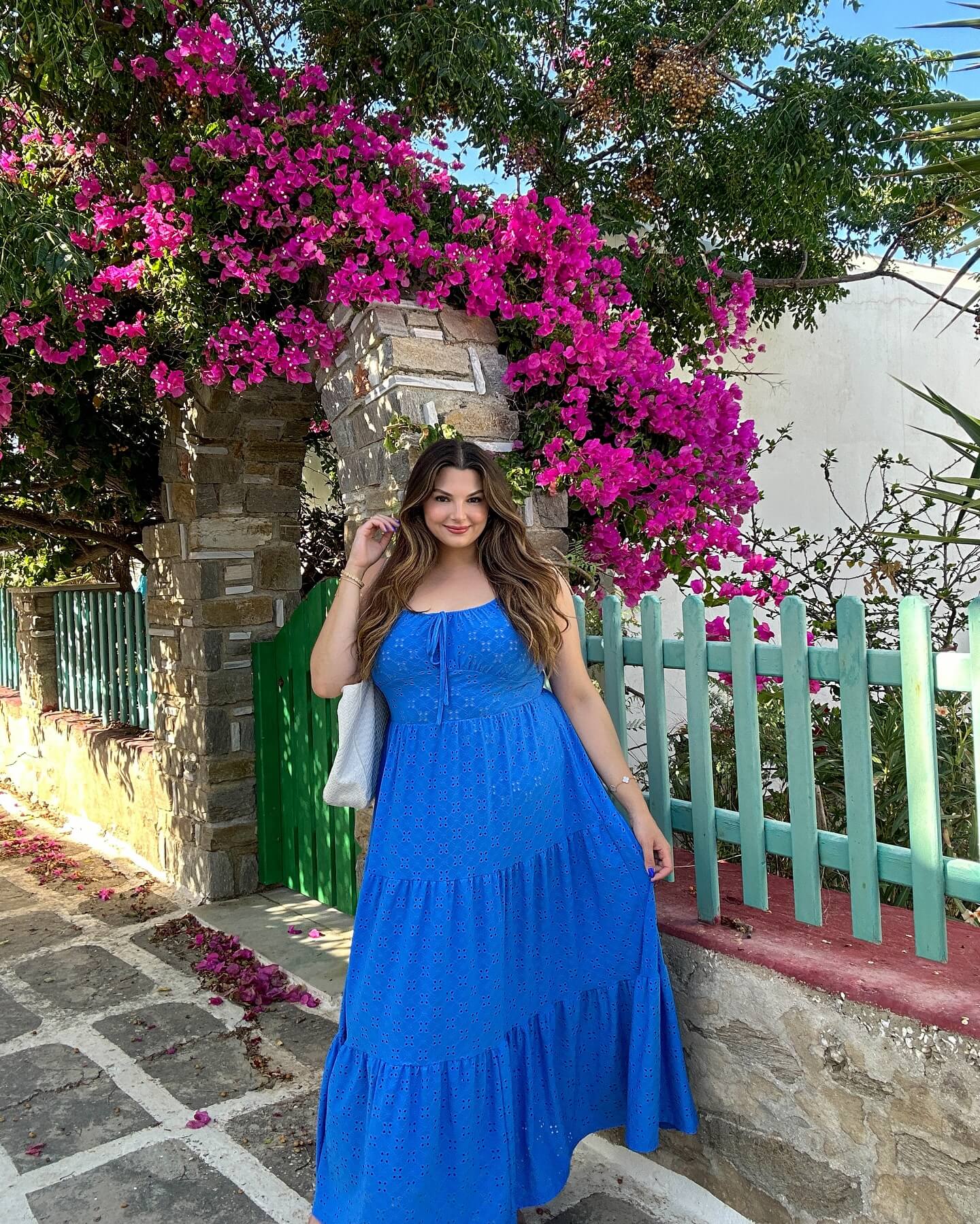
Spring in Greece is pure magic—blooming wildflowers, mild afternoons, and soft winds off the sea.
I remember wandering Mykonos in April wearing a linen button-up and a flowy skirt. It felt easy and effortless from morning coffee to dinner by the water.
This is your season for lightweight layers. Pair linen trousers or cotton wide-leg pants with a soft tee or flowy maxi dress. Add a denim jacket or open cardigan for evenings when the temperature dips.
Linen keeps air circulating and wicks moisture, which is why it’s the best fabric for humid travel days.
Action step: Choose one neutral “shell layer”—like a cardigan or denim jacket that pairs with all your tops. Pack it on top of your suitcase for easy access when the evening breeze hits.
Opt for sea-inspired tones—aqua, white, and coral—that look natural against Greece’s pastel buildings and olive groves.
Once spring settles in, the real challenge is summer’s heat.
Summer Outfits: Stay Cool Without Compromise

Summer in Greece doesn’t play around. The CDC Travelers’ Health guide warns that prolonged heat exposure can cause dehydration fast, especially when sightseeing.
Daytime highs soar into the 90s °F (mid-30s °C), and the “Meltemi” winds bring bursts of hot, dry air across the islands.
To stay comfortable, choose light, loose, and breathable fabrics. The Georgia Tech Textile Research Center found that natural fibers like linen and bamboo cotton outperform synthetics in heat release and airflow.
Go for pieces that skim, not cling—flowy cuts keep your skin cool and your silhouette graceful.
Outfit ideas to try right now:
- A linen jumpsuit with adjustable straps
- A printed kaftan with side slits for movement
- Wide-leg pants and a tank top tucked in for shape
Don’t forget sun-protective accessories. I recommend wide-brim hats and UPF-rated clothing for prolonged sun exposure.
Action step: Before you fly, test one summer outfit in your local afternoon heat. Move, sit, and walk—if you feel sticky or trapped, swap it for something lighter.
Bring cooling wipes or a misting spray for instant refreshes between museum stops or hikes.
Once the heat starts to mellow, Greece shifts into a softer, golden season—fall.
Fall Outfits: Transition Smart, Stay Stylish

Fall is easily one of my favorite times in Greece. The crowds thin, vineyards glow gold, and evenings carry just enough chill for light layers.
Build outfits that balance warmth and breathability. Start with a midi dress or stretchy knit skirt, then layer with a cropped jacket or light blazer. A scarf adds both coverage and flair, especially when island winds pick up.
Stick to rich hues like terracotta, olive, and cream—they blend beautifully with sunset light and ancient stone walls.
Action step: When testing outfits at home, pair a summer piece (like your favorite dress) with a light jacket. If it keeps you comfortable through a five-degree drop, it’ll handle Greece’s day-to-night shift just fine.
As fall fades and the vineyards quiet, Greece cools but never loses its charm.
Let’s get ready for winter’s softer pace.
Winter Outfits: Warm Layers Without Bulk
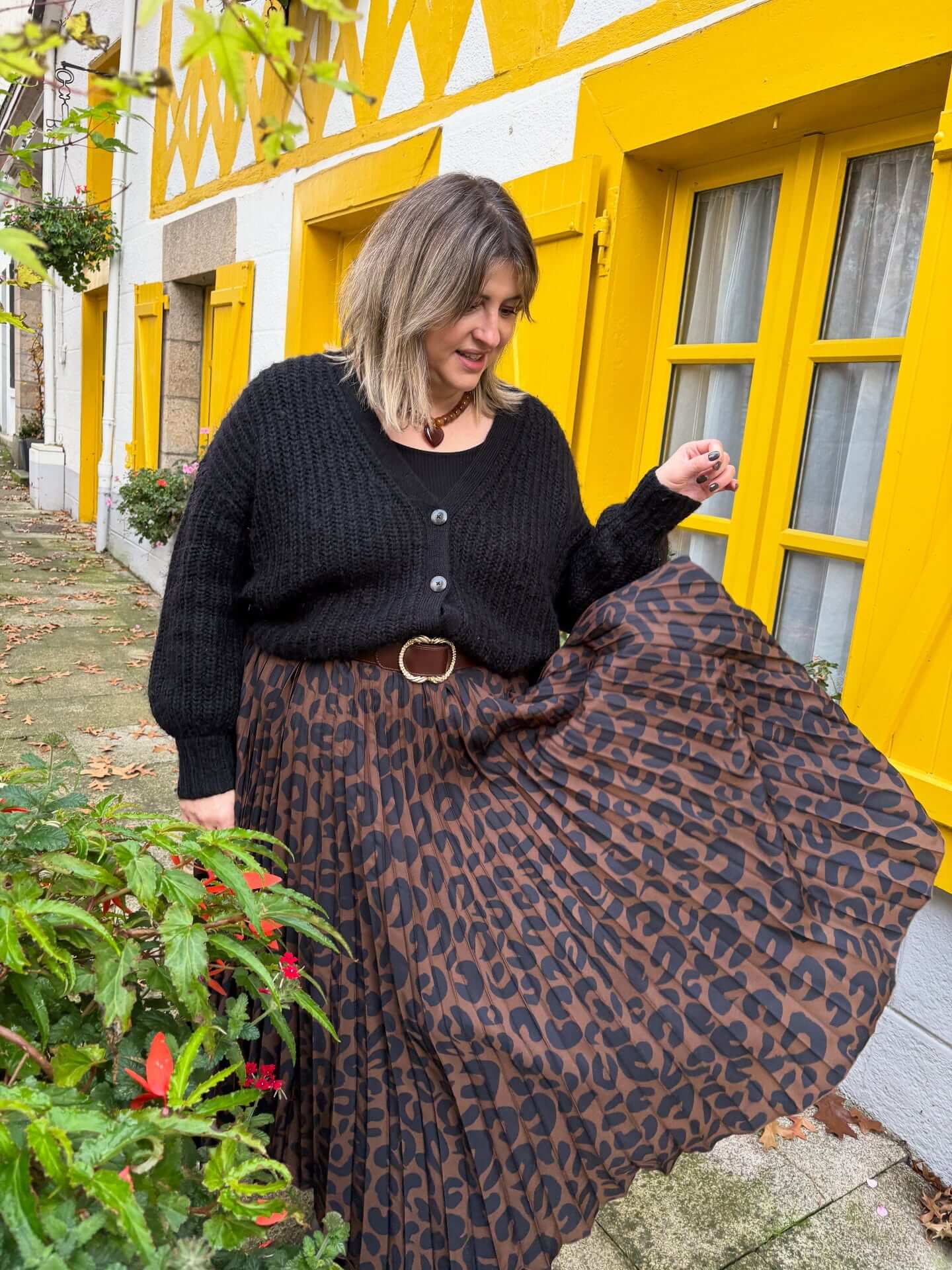
Winter in Greece rarely freezes, but damp air and coastal winds can surprise you. The Hellenic National Meteorological Service notes that December through February are the rainiest months, especially in the north.
Think light insulation, not heavy coats. Start with a merino or thermal base, add a mid-weight sweater, and top it with a wool-blend coat or longline poncho.
Choose structured pieces that shape your silhouette without bulk—an open wrap coat or belted trench works beautifully.
Pair with dark jeans, ponte pants, or ankle boots that handle slick streets. And if you’re exploring monasteries or mountain towns, layer a scarf and hat to block gusts.
Action step: Test your travel layers before you go. Wear your full outfit for five minutes of brisk walking outdoors—if you overheat or feel constricted, adjust now instead of mid-trip.
Add a compact umbrella or packable rain shell for light showers. Once your winter capsule is ready, we’ll step into footwear that makes exploring Greece effortless.
Footwear That Works in Every Season
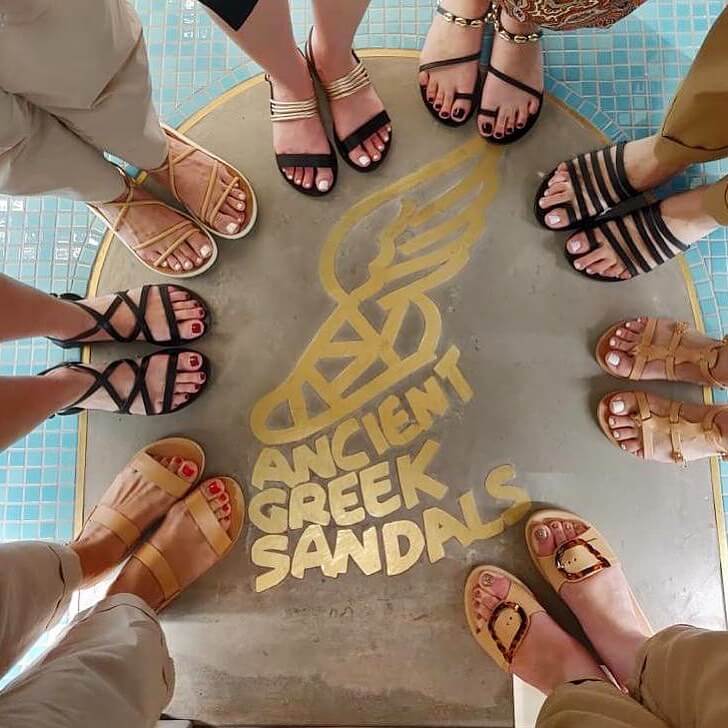
If there’s one lesson Greece drilled into me, it’s that your shoes can make or break a trip.
I’ve walked marble ruins in Athens, climbed the stairs of Oia for sunset shots, and shuffled along ferry decks in the Aegean wind—and I’ve learned that cute sandals mean nothing if they blister halfway through.
The American Academy of Podiatric Sports Medicine notes that walking shoes should have firm heel support, flexible soles, and room for your toes to spread.
That’s exactly what you need for Greece’s cobblestone streets and uneven terrain.
Go for cushioned sandals with adjustable straps, supportive sneakers for sightseeing, and water-resistant ankle boots for winter months. Before your trip, wear each pair on a few errands or walks to break them in.
Action step: Walk at least 5 km in your main pair before packing. If your feet feel sore or rubbed, swap insoles or size up slightly.
Bring blister patches and moisture-wicking socks—your future self will thank you.
Once your shoes are ready, it’s time to think about the fabrics that flatter and breathe no matter the season.
Fabrics & Fit That Flatter Curves in Any Climate
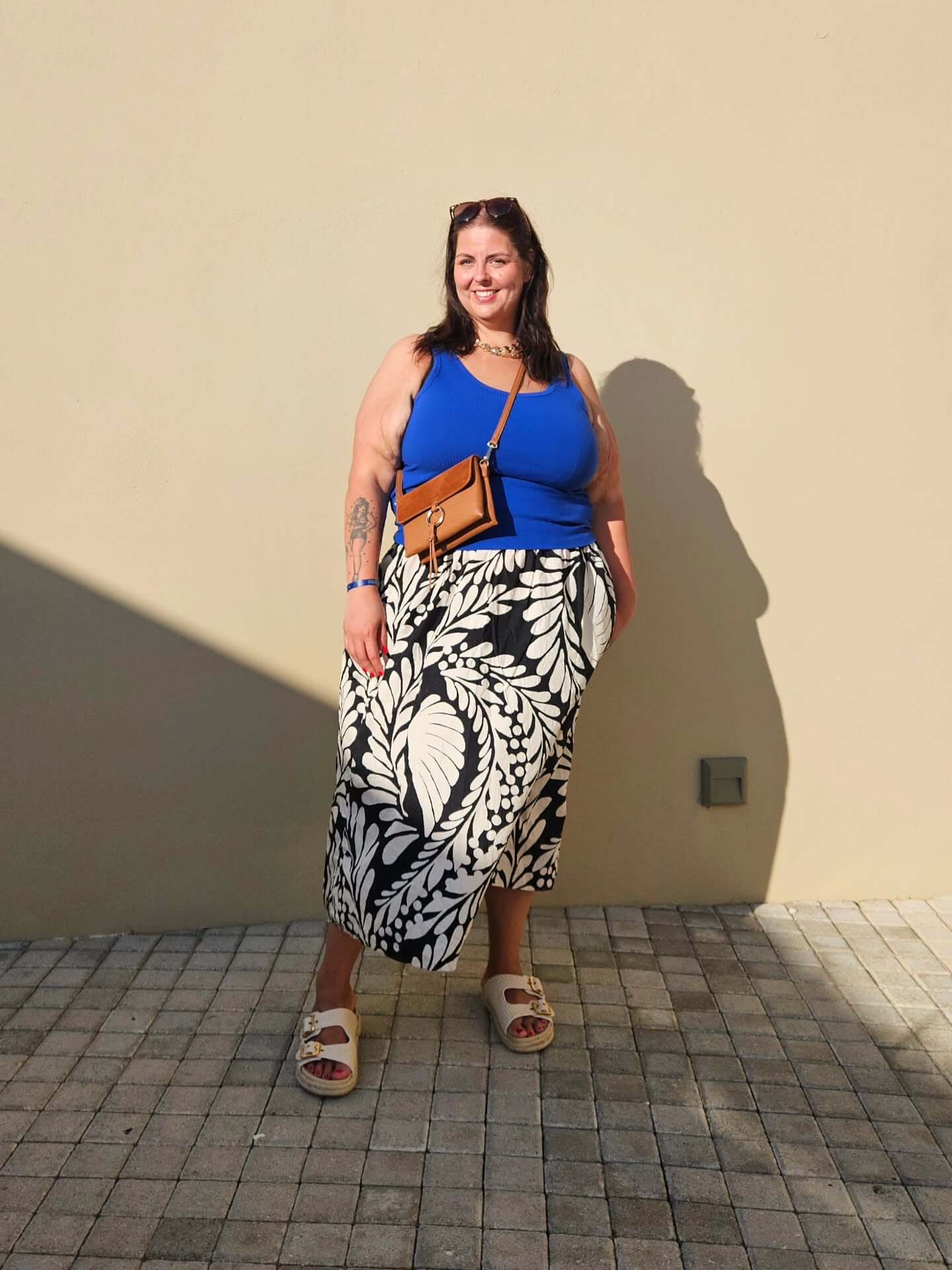
As a plus-size traveler, I’ve learned that comfort doesn’t mean settling. The secret lies in fabric and fit, not hiding behind oversized clothes.
Experts at REI recommend breathable materials that hang loosely and dry quickly—think linen, rayon, or viscose blends. These fabrics allow airflow while keeping structure, so you can move freely without cling or wrinkles.
Choose styles that follow your shape, not squeeze it. Wrap dresses, empire cuts, and wide-leg pants with elastic waistbands balance proportion beautifully.
And don’t underestimate small design details: side slits add movement, V-necks elongate your frame, and vertical prints subtly streamline the silhouette.
Action step: Do a “mirror test” before the trip. Walk, sit, and raise your arms in each outfit to check comfort and mobility. If you love how you feel, pack it. If you keep adjusting it, leave it behind.
Now that you’ve nailed the foundation, let’s pull it all together with accessories that pop on camera and work in real life.
Photo-Ready Accessories That Pull the Look Together

Greek light does something magical to color—it makes everything brighter. When I wore a coral scarf in Santorini, it glowed against the white walls and sea-blue domes.
Accessories aren’t just extras—they’re how you personalize neutral basics.
Pick 2–3 statement pieces per outfit. A wide-brim hat for protection and balance, a belt that defines your waist, or drop earrings that catch sunset light.
For jewelry, pack small items in pouches or a hard travel case to avoid tangles.
If you plan to visit monasteries or sacred sites, bring a lightweight wrap or maxi skirt.
Visit Meteora Travel confirms that modest attire—covered shoulders and knees—is required at most monasteries.
Action step: Before leaving, take a quick flat-lay photo of your favorite outfits with accessories. You’ll thank yourself later when you’re rushing to dress for a tour or dinner.
Once you’ve got your accessories sorted, let’s talk about how to pack them smart without overstuffing your suitcase.
Packing Strategy for Plus-Size Travelers
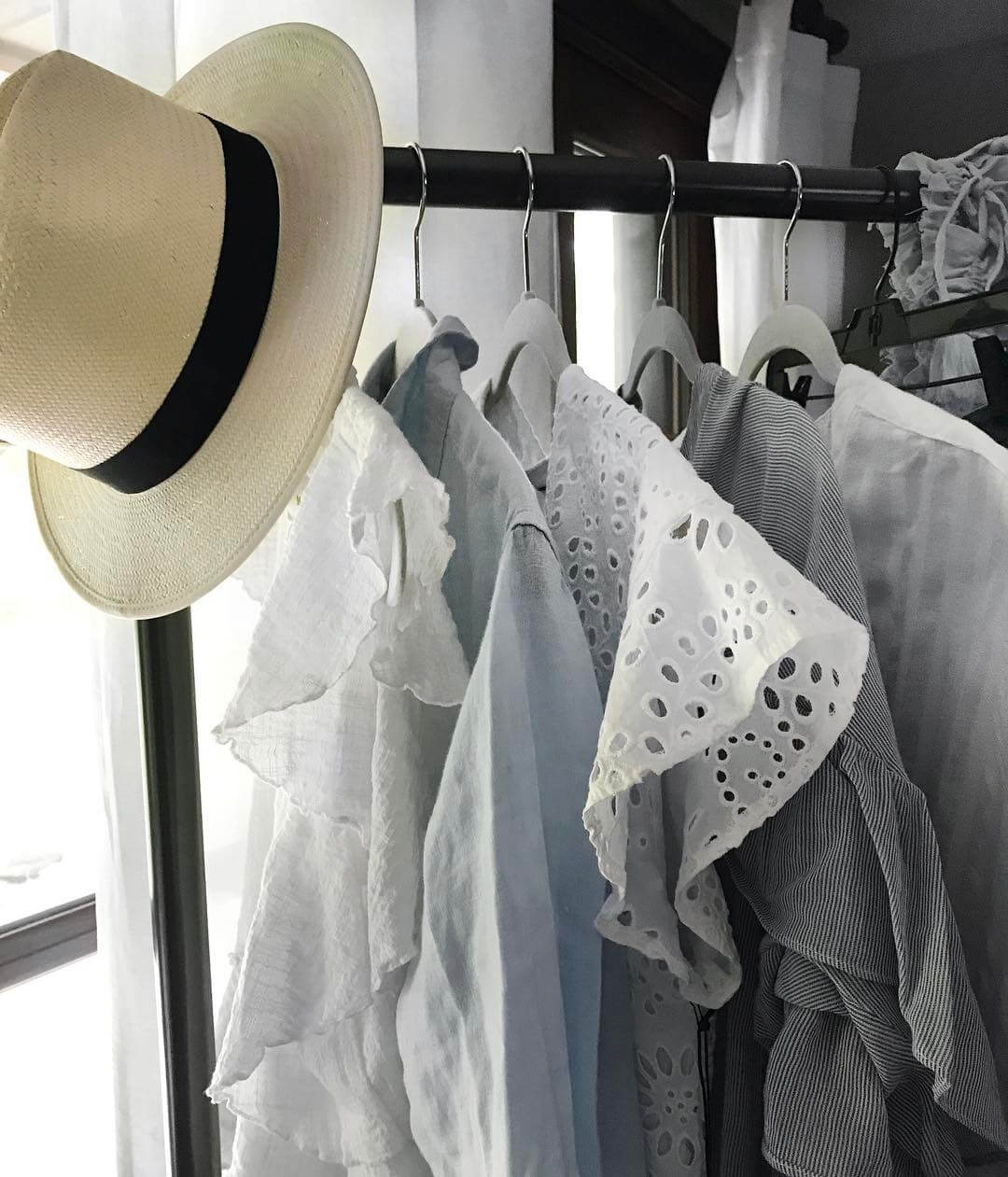
After years of overpacking, I finally mastered the art of traveling light without feeling underdressed.
My secret? A capsule wardrobe that fits in one medium suitcase—perfect for island hopping or train travel.
Start with 8–10 mix-and-match items: a few tops, bottoms, and dresses that all coordinate. Choose neutrals like white, beige, or navy, then add one pop color that ties everything together.
Rolling clothes instead of folding saves space and cuts down on wrinkles.
Use packing cubes to separate daytime outfits, beachwear, and evening looks. Keep heavier items like shoes or toiletries at the bottom of your bag for balance.
And yes, plus-size clothing takes up a little more room—so aim for quality over quantity.
Action step: Lay out every outfit on your bed a week before flying. Remove anything that doesn’t match at least two other pieces.
Then add small essentials: anti-chafe balm, travel laundry soap, and a mini steamer to keep your wardrobe fresh anywhere.
Once your suitcase is zipped, there’s just one thing left to pack—your confidence.
Confidence Is the Best Outfit

I still remember walking into a seaside taverna in Crete one evening. My hair was wild from the wind, my sandals were dusty, and my linen dress had a tiny stain from gelato.
But when I caught my reflection in the window, I smiled. I looked happy—and that’s what mattered.
Outfits are tools, not disguises. The right one makes you stand taller and feel freer, but real style comes from how you carry yourself. Your confidence lights up photos more than any color palette or accessory ever could.
Whether you’re posing under the Parthenon or chasing a sunset in Santorini, remember this: you belong there exactly as you are.
No edits. No shrinking. Just you, enjoying Greece on your own terms.
Action step: Pick one outfit that makes you feel incredible and wear it on your first full day in Greece. Confidence sets the tone for your entire trip.
Before You Go: A Little More Confidence for the Road
You’ve got your outfits planned and your suitcase ready. Now comes the best part—actually living it. Greece isn’t just a destination; it’s a rhythm that pulls you in.
Once you’re there, you’ll find that the clothes you packed matter less than how free you feel walking through those ancient streets or sitting by the sea at dusk.
Before you close this tab and start dreaming about your trip, here are a few quick answers to the questions I get most often from women heading to Greece for the first time.
FAQ: What Plus-Size Travelers Ask Most About Greece
What should I avoid wearing in Greece?
Skip heavy jeans, thick fabrics, and anything too tight or synthetic. The heat can be relentless, especially in summer.
Stick to light, airy clothes—linen, cotton, and breathable blends. Leave the slippery sandals behind too; stone paths and marble stairs can be slick.
Can I wear shorts or crop tops in Greece as a plus-size woman?
Absolutely. You’ll see every shape and size enjoying the sun. Confidence is your best accessory.
Just remember to carry a light wrap or scarf in case you visit churches or monasteries where modest clothing is expected.
Are there plus-size clothing stores in Greece?
Yes. You’ll find both local and international brands in cities like Athens and Thessaloniki. Still, I always recommend bringing your go-to travel pieces from home so you know how they fit and feel.
What shoes are best for sightseeing in Greece?
You’ll walk a lot—on stairs, cobblestones, and steep alleys. Bring one pair of cushioned sneakers and one pair of supportive sandals you can wear all day.
If you travel in winter, ankle boots with good grip will keep you steady and stylish.
How can I stay comfortable on long sightseeing days?
Layer smart. Start with a breathable base, add a light overshirt or scarf, and carry a refillable water bottle. Schedule short café breaks and rest in the shade.
A quick spritz of cooling mist or a damp towel behind your neck can work wonders on hot afternoons.
What’s the best way to pack plus-size clothes efficiently?
Roll your clothes instead of folding, and plan for pieces that mix and match easily.
Packing cubes keep everything organized, and lightweight laundry sheets let you refresh your outfits halfway through the trip.
Think capsule wardrobe—fewer items, more possibilities.
Do I need to dress up for dinner in Greece?
Not really, but it’s fun if you do. Most restaurants are casual, but a flowy dress or crisp button-up makes evenings feel special.
Pair it with comfortable sandals or wedges and you’ll blend in beautifully.
Final Thought: Confidence Travels Light
If I’ve learned one thing from exploring Greece solo, it’s this—your best outfit is the one that lets you live fully.
When your clothes move with you, when your shoes let you wander longer, and when you stop worrying about how you look, something magical happens.
You start experiencing Greece, not just visiting it.
So pack with intention, walk with confidence, and let every breeze remind you—you belong here.
RELATED:
Planning Your First Trip to Greece? Here’s Everything You Need to Know

